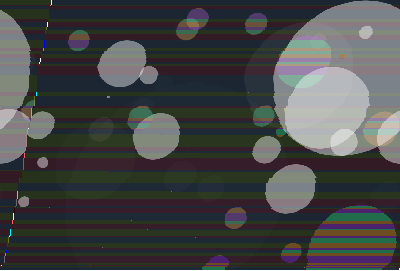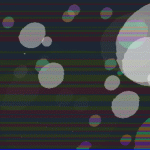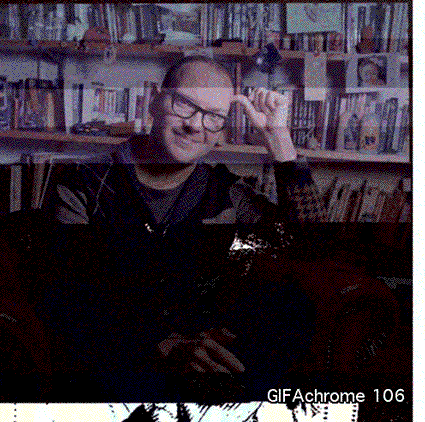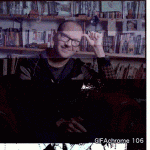Taken with exclusive Giff-Glitch-a-chrome film created by John Johnston’s hot off the press Simple Glitch App.
Month: November 2013 (page 1 of 2)
Information is just information
Take 2 of Cory Doctorow’s photo remix invite from Jonathan Worth. The theme from a forthcoming book by Cory ‘Information does not want to be free’.
When I started DS106 and this blog, I heard somebody advising a participant that if he was frustrated by the way a large corporation had treated him, then he should just ‘DS106 it!’. I remember thinking it was interesting to advise the use of creativity to work through frustration. DS106 as art therapy. I have since learnt that it also means DS106 as political activism, as there are many examples in the community of producing art as a way to make political or social critique.
Life has thrown me a lemon in the form of the systems and procedures of the Open University (OU) which have led to me formally withdrawing from their Masters on Online and Distance Education (MAODE) and requesting that all my personal data held behind their registration wall be deleted. I filed a generic email under ‘appeals and complaints’ – which will probably only give me yet another automated email as a response – after 3 months of trying very hard to hold a reasonable conversation with those responsible for the module and the Master as a whole. All to no avail. The trail ended with an anonymous feedback form with a set of assumptions that will lead to my tutor being held responsible for the issues I have had, rather than a review of the systems and procedures of an educational institution that in the name of fairness is running a Masters programme teaching students critical thinking by numbers.
The rest of this post offers the feedback I was unable to offer confidentially.
MAODE has several modules one of which is the Openness and Innovation module (#H817). At the end of the module it asks its students for the following in order to assess that they have reached the apropriate standards:
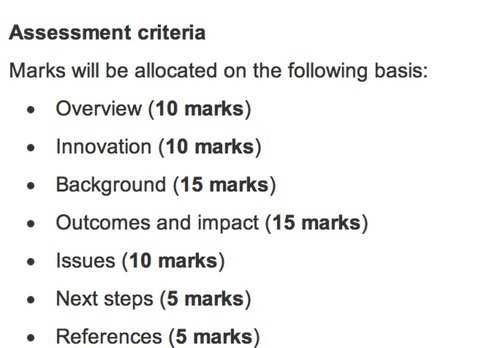
and a further 10% is broken down as follows:
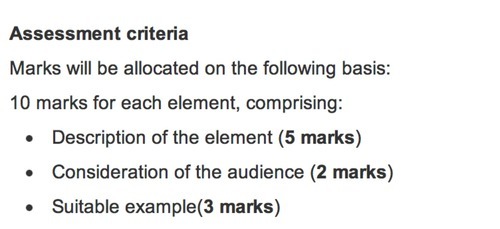
Am I the only one seeing the irony in this assessment procedure? This is a Masters programme. This is a module that teaches openness and innovative approaches to learning. However, in signing up I knew that I would have to adapt.
I understood that if I wanted to continue with the course then I would need to adjust to this way of learning. When asked, I said that whilst I was enjoying what I was learning, I was not enjoying how I was learning it. The module has numerous pedagogical issues that I will not be discussing here, but I did want to discuss with faculty. I asked my tutor, she referred me to the head of the module, the head of the module referred me to the director of the programme, the director of the programme sent me the link to the anonymous feedback form.
I need to say that I have always had very idealistic notions about the OU and how it opens up education to all. This was my first real experience with it, and I must admit to being shocked by the reductionistic and disposable assignment nature of its pedagogical approach. In completing my first module with them, I kept making allowances for the shortcomings and doing my best to offer feedback and to attempt to navigate the constraints whilst looking for my learning needs to be met. I contacted one of the OU tutors, who has been an exemplary role model of open education, Paige Cuffe.
@paigecuffe thanks Paige. Want to offer feedback on modules. Also – I do not want 2 do compulsory one. I don’t need it, want 2 do others.
— Mariana Funes (@mdvfunes)
She was supportive of my intentions:
@mdvfunes worth talking to them – just taking control of your learning…
— paige cuffe (@paigecuffe)
I failed in my good natured attempts to offer feedback beyond anonymous surveys. I was frustrated beyond my levels of tolerance by the ‘closed-due-lack-of-interest’ approach my requests for dialogue met.
I was even accused of not being polite enough, as I got close to my third month and 5th person asking for a phone or face to face conversation to discuss my learning needs and offer feedback:
Thanks, Mariana, for your comments. However, you have strayed beyond the reasonable (and the polite) when you write:
“It is really not great practice to keep passing unhappy customers on to other members of faculty to get them out of your inbox.”
I was pointing you to the person who is in the best position to take account of your feedback.
I had only one option left and I chose not to take it. I could have contacted the one person that had made this #817 Open University module worth doing, Martin Weller. Martin, like Paige, is an exemplar open scholar. Engaging on the open web, sharing resources and certainly not trying to pass on OU students, or anyone else for that matter, so at to clear his inbox. He has always been helpful, he ran my first MOOC and opened my eyes to what adult education using the open web could really be like beyond the walled garden of the LMS. Yes, I could have contacted him and he would have listened. But it is not his job to deal with unhappy OU students. Particularly, when he works so hard at giving the OU a positive profile. This is why I chose to go through the appropriate channels. How should the OU have responded? Not the way it did in my view.
In my view, the right thing would have been for the head of H817 or the director of the Masters I was enrolled in to do me the courtesy of listening. I am, after all, paying two thousand five hundred pounds sterling for the privilege of being taught on the module. I have rights. Of course, if I were invested in getting yet another postgraduate degree I would not feel quite so free to challenge the powers that be. Those very people who control the pass/fail levers. Thankfully, I already have as many degrees as I need, and a reputation in my field as a chartered research psychologist specialising in adult learning. I do not need another degree.
I wanted to engage in dialogue as equal partners with the Open University faculty. I was, instead, treated as a nuisance and forced to make the choice to withdraw from a course I really wanted to complete just because I believe in the ideals of the Open University and wanted to be part of its community.
I have met wonderful people through H817open and through the closed LMS #H817. The community is not at fault. It is the systems and procedures of an institution that used to be at the leading edge, is now drowning in red tape and made up of silos that do not communicate with each other. I would have wanted to engage constructively with faculty to offer a view of one student’s experience and how their pedagogy may be affecting dropout rates. It was not to be. My final communication with the director of the Masters Programme after my repeated requests to talk, simply reminded me that I had been sent an email to give feedback and had not acted on it. It was clearly my fault that my feedback had not got into the system and may be a reminder would lead me to comply.
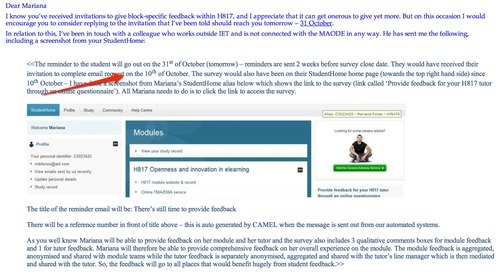
I did comply. I filled in the form, but the form is not designed for dialogue but for the same thing that all OU formal communications seems to be – ensuring that the organisation is not held responsible for any complaints. I lost track of the interactions I had that were not about engagement but about fault finding. I summed up my form filling experience in my last email to the director as follows:
It seemed appropriate [to fill in the form] to help future students and yourselves. Your form is biased and does not allow for a flexible and open feedback loop. The way the form is designed it will put the responsibility on my tutor for my discontent. This would be a mistake. She has struggled with the same things as I have: really trying to do a good job as procedures, systems and work conditions have conspired against her being able to deliver.
The module (H817) was not ready to be delivered and you have made your students pay for experimentation and refinements. I paid for access to library and faculty and all I got were excuses from the library and apologies from my tutor as she struggled with the system. The only faculty member that offered what I paid for was Martin Weller. Everyone else was absent beyond writing a Moodle book. It was only when students insisted on getting contact that we got 1 hangout to clarify a confused block and project. I was paying for more than that.
I close this post with the best example of the systemic pattern I encountered at the OU. I spent 6 months trying to get access to the library services I was paying for and failing. Unless references could be acquired directly online no support to speak of is available. A number of ignored emails later, I contacted my tutor and asked for help. She could not help me. She did, however, suggest I contacted their web chat service, as it was an efficient service.
If you have made it this far, make yourself a cup of tea and listen to my podcast ‘The Helpful web-chat librarian’. I could not make it up.
Good bye Open University, hello MOOC life!
World’s biggest MOOC enrolls 7.2 billion people– it’s called “Earth”
— Alan Levine (@cogdog)
Cory Doctorow, taken with a GIFAchrome 106 camera
“First, it’s okay to copy! Believe in the process of copying as much as you can; with all your heart is a good place to start – get into it as straight and honestly as possible. Copying is as good as any other way of getting ’there.’ ”
NOTES ON THE AESTHETICS OF ‘copying-an-Image Processor’
Phil Morton (1973)
I just wanted to make a start learning about remixing. Is it a creative act? Where is the creative act? Is it in my choice of filters in Photoshop? Is it in my ordering of video clips? The special effects chosen? The idea that everything is a remix and to some extent has always been, strikes a chord and challenges the view that creativity is originality. The underlying assumptions in what we are reading/viewing this week seems to be that creativity lies in the process of bridging the use of a known set of elements to a new narrative or purpose. Much to learn and reflect on.
A Fair(y) Use Tale – TeacherTube
I love stuff that explains boring stuff in a fun way!
A while ago Rochelle suggested we had a conversation about the addictive nature of DS106. She was asking a serious question – what is the nature of DS106 that leads a few of us to dedicate more time than we have to it for no pay or egoboo and is our judgment affected in ways we do not see? She wondered about the neurochemistry of love and addiction – dopamine and serotonin in the brain playing havoc and leading to unhealthy choices.
About the same time I made this fun DS106 trailer:
I recognised the pattern she was referring to. I have spent longer than I am willing to admit trying to get an animated gif to do its thing for no discernible purpose other than I love it and fun is good. And yes, I know enough about addiction to know that addicts say the same thing about their drug of choice. If you want a funny look at this issue then you could do worse than watching Flesh-eaters Anonymous but be aware it is not for the faint hearted and its humour rather dark, more halloween than academia.
The rest of this post is a serious look at this proposition and explores some of the issues and questions we explored when we talked. An edited version of the conversation can be heard at ColinPods.
Is our judgement being affected in ways we do not see? Many people who I consider wiser than me think so. Richard Foreman on The Edge explains the issue in a graphic and poignant way:
But today, I see within us all (myself included) the replacement of complex inner density with a new kind of self-evolving under the pressure of information overload and the technology of the “instantly available”. A new self that needs to contain less and less of an inner repertory of dense cultural inheritance—as we all become “pancake people"—spread wide and thin as we connect with that vast network of information accessed by the mere touch of a button.
Will this produce a new kind of enlightenment or "super-consciousness”? Sometimes I am seduced by those proclaiming so—and sometimes I shrink back in horror at a world that seems to have lost the thick and multi-textured density of deeply evolved personality.
But, at the end, hope still springs eternal…
George Dyson on the same page asks: Does the resulting mind belong to us or to something else (Google perhaps)?
Our work on creating a personal cyberinfrastructures puts DS106 on the ‘hope springs eternal camp’. Yet I think something wicked this way comes. I see pancake people all around me and I fight each day my own tendency to skim read and and store stuff instead of engage with it in the moment or in depth. It is not the same to engage and remember than to know where to find and it is not the same to do a daily create than to do a life time create. Breadth and depth. I too sometimes shrink back in horror at a world without density and people lacking in layers. I too find that hopes spring eternal for this web that I love, but we need to engage with the tough questions raised by Rochelle. Are we making ill-informed judgements because we are addicted to the processes it affords? Are our cognitive abilities changing (not necessarily for the better) as we fall in love with the vast network of information and it offers us the illusion of ‘super-conciousness’ whilst (may be) dwarfing our ability to evolve a deeply textured personality?
The idea that dopamine is released into the system on the anticipation of a reward is key to this discussion. And the word anticipation needs underlying. We will keep going doing something that is not healthy to get this feeling of anticipation – Rochelle’s point is that may be DS106 is set up to maximise the feeling and hence we create a kind of an addiction to the process of creating as we anticipate the output and have to keep searching for more tutorials, more ideas, more resources to complete our tasks. DS106 ain’t no Google Form.
Looking at it psychologically, I connect to Thomas Moore and the myth of Icarus. Listen to it as kid’s story here and relax for a while. We fly too high and get burnt by the sun. Moore has dedicated his life to the creative process and his advise is for balance and connection not grasping and keeping going at any cost.
If our tools are changing us and our way of thinking, but we keep on using them for pragmatic purposes or because we like the feeling that the anticipation of completion brings, we may be blind to harm. After all psychology is full of evidence about how we are not as smart as we think we are and how cognitive biases offer up to consciousness life as we want it to be not life as it is.
Nick Carr in his seminal article ’Is Google making us stupid?’ notices something amiss:
My mind isn’t going—so far as I can tell—but it’s changing. I’m not thinking the way I used to think. I can feel it most strongly when I’m reading. Immersing myself in a book or a lengthy article used to be easy. My mind would get caught up in the narrative or the turns of the argument, and I’d spend hours strolling through long stretches of prose. That’s rarely the case anymore. Now my concentration often starts to drift after two or three pages. I get fidgety, lose the thread, begin looking for something else to do. I feel as if I’m always dragging my wayward brain back to the text. The deep reading that used to come naturally has become a struggle.
Plenty has been written to refute the argument that the tool is shaping us and I myself want to believe that technology is neutral and that we can approach it from a centred space. Yet, what we are starting to uncover here is that if this were not the case, we would not notice.
What the Net seems to be doing is chipping away my capacity for concentration and contemplation. My mind now expects to take in information the way the Net distributes it: in a swiftly moving stream of particles.
What are we creating when we have a tool that is taking away the mental models we carried with us and holding them for us?
-
What are the things that make DS106 the kind of learning environment that it is?
-
It is a special creative enclosure, but why? What is its shadow?
-
Are we just getting addicted driven by chemistry in relation to the environmental conditions the DS106 space creates?
-
Do others experience a sense of concern for themselves or for the more vulnerable in the community?
-
Are we creating a set of conditions that is not conducive to making good decisions?
A key element to investigate seems to us to be the drive to seek. There is evidence to suggest that we prefer the chemistry of seeking than that of getting. Yoffe says in her article that humans and rats seem crazed not happy when they learn to stimulate the brain chemistry of seeking:
[self-stimulating rats and humans] did not exhibit the euphoric satisfaction of creatures eating Double Stuf Oreos or repeatedly having orgasms. The animals, he writes in Affective Neuroscience: The Foundations of Human and Animal Emotions, were “excessively excited, even crazed.” The rats were in a constant state of sniffing and foraging. Some of the human subjects described feeling sexually aroused but didn’t experience climax. Mammals stimulating the lateral hypothalamus seem to be caught in a loop, Panksepp writes, “where each stimulation evoked a reinvigorated search strategy” (and Panksepp wasn’t referring to Bing).
She suggests that our net searching behaviour is just an addiction, that we ‘keep hitting enter just to get our next fix’. Rochelle highlighted in our conversation that in DS106 we are constantly seeking – new ideas, new tutorials, new people to bring into the ‘cult’…
Yoffe again, quoting Berridge:
That study has implications for drug addiction and other compulsive behaviors. Berridge has proposed that in some addictions the brain becomes sensitized to the wanting cycle of a particular reward. So addicts become obsessively driven to seek the reward, even as the reward itself becomes progressively less rewarding once obtained. “The dopamine system does not have satiety built into it,” Berridge explains. “And under certain conditions it can lead us to irrational wants, excessive wants we’d be better off without.” So we find ourselves letting one Google search lead to another, while often feeling the information is not vital and knowing we should stop. “As long as you sit there, the consumption renews the appetite,” he explains.
So do we find ourselves letting one animated gif lead to another, or one DS106 movie trailer lead to another, knowing it is not vital and that we really should sit and have dinner with our spouse instead? Do we keep clicking just to get the next fix? Is time to form DS106 Anonymous?
From a pedagogical viewpoint, I am interested in exploring how we are structuring our online learning environments to pander to particular bio-chemical states wether functional or not, over time.
If humans are seeking machines, we’ve now created the perfect machines to allow us to seek endlessly. This perhaps should make us cautious. In Animals in Translation, Temple Grandin writes of driving two indoor cats crazy by flicking a laser pointer around the room. They wouldn’t stop stalking and pouncing on this ungraspable dot of light—their dopamine system pumping. She writes that no wild cat would indulge in such useless behavior: “A cat wants to catch the mouse, not chase it in circles forever.” She says “mindless chasing” makes an animal less likely to meet its real needs “because it short-circuits intelligent stalking behavior.” As we chase after flickering bits of information, it’s a salutary warning.
DS106 Headless 13 is in the middle of 2 weeks of video. I have managed to create a couple of videos and read a few movie scenes but my time right until Monday was taken up with audio. I decided to create another show this time on my own without my great @talkyteam to help me.
I have learnt a lot and when we broadcast the live show we had a few listeners and some kind words. The guests of honour, Jonathan Worth and Jon Levy of Phonar, did not make the live show but John Johnston and I did the best we could to fill the space with useful dialogue:
Just listened to #ds106radio convo. Interesting ideas. I love listening to like minded people that I can relate to #ds106
— ∆lex Mason (@AlexMasonPhoto)
We even had an offer of help from one of the Phonar 13 students who listened and also found it interesting:
@mdvfunes cool…will do something for soundcloud. Look forward to more of your shows :).
— WINNIE MANGWENDE (@ilovephotocall)
You can judge for yourself if you follow the archive link for the live show. A special thank you to John for being a last minute sound engineer and using Levelator to even out my clumsy edits. If you just want to hear the recording of the pilot show, you can find it at ColinPods where I am starting to store all the audio I am making. Also a big than you to Bill Smith who helped me navigate the DS106 Radio Servers and who (bless him) took the first version of the show in his car to work to listen and offer me feedback. He emailed detailed feedback and I am very appreciative of the support.
The rest of this post is about my reflections on audio, collaboration and just doing my best to keep going with DS106 Headless13 in the absence of a Head.
My first reflection is the same as as always – this stuff is hard work.
Each week as we learn new media to use for our digital stories I am amazed at the amount of time it takes to produce something that I consider fair to middling quality.
This week I have been trying to get through weeks 11 and 12 of the course with video assignments. I decided not to do the Chaplin video as I already played with that earlier on the course .
So I decided to work on my first open educational resource video instead. I figured that if my video had several short clips that needed editing and creating then that would count towards the 16 stars worth of assignments we are meant to do this week. I will end the week with a radio programme that (almost) nobody heard and no vOER to show for my efforts.
I wanted to complete the radio show first and premiere it as I had promised to do it. I felt pretty alone and pointless on Monday when nobody was able to turn up and only a few listeners heard the show. it made me reflect on my intentions when making artefacts for DS106. I tell myself I am making them for my own learning, yet I was pretty disappointed when nobody from DS106 turned up to listen. I could hear echoes of old patterns – after all the hard work i put in….yet, I was able to look beyond these.
We say that we create for an audience or the potential of an audience and that this offers a different kind of learning potential than sitting in a classroom or writing on my hard disk. We formulate our ideas more clearly when we think of an audience, we form the ideas as we speak on the radio. All this feels true and useful. We do not say as much about the vulnerability this exposes us all to. The ‘Zero Comment’ dynamic Lovink discusses so eloquently or in my case the ‘Zero Listeners’ dynamic which on monday was compounded with Zero guests. I was so grateful to John and Bill for taking an interest.
Bill understood that I had taken a long time to produce it and cautioned me to perhaps reconsider my idea of a weekly show:
Otherwise, excellent production! I think you could continue the show, bringing in a variety of topics related to the themes of photography and audio, and the psychology of perception and cognition. I don’t know about your overall schedule, but you might find weekly to be overly ambitious if you are the only producer, editor, narrator, researcher, writer, and technician.
So I ask myself again, why did I do it?
- Because I wanted to learn how to produce a whole show on my own?
- Because I wanted to do something nice for Phonar?
- Because I was interested in the ideas?
- Because I wanted recognition?
I think it was a bit of ‘all of the above’.
What was brought home to me was that I had expectations about how others would behave and these were not met. This led me to reflect on what is the psychological contract we have in hashtag classrooms. It is not clear and it can be tough to navigate the uncertainty and lack of guidelines. I learnt about my unconscious expectations and also about how touched I was that 2 people who know me little were willing to support me so that the show could go live on Monday. I do wonder if the flow channel might have tipped to too much anxiety had it not been for these 2 people helping me learn.
More generally it makes me think about how feasible it is to ask students to challenge themselves publicly without a clear psychological contract to encourage flow.
I am really happy I did it and now feel I can keep on going with audio. I will not be doing live radio for a while but will continue with my ColinPods as and when i feel the need. I have a clearer sense of intention going forward and creating podcasts will be driven by my own desire to learn about a topic.
As I end my audio reflections I need to say something about how this video-week-that-never-was has been. I was inspired by the idea of creating something useful rather than a few disposable assignments for video week 12. As I started to work with the web and find out about what a simple video needed from me, I panicked. I was tired from spending many hours on GarageBand for the radio show and could not face learning iMovie in a day. I thought I would start with something ‘easy’ – the script.
I am still writing that and as it shapes itself and I start collecting what I need for it, I am starting to think my timeframes might be off. I will not be producing anything by the end of the week. If i want to do a fair to middling job of this vOER then I think I am looking at it becoming my final project as well as my 16 stars of video assignments. I am left questioning the wisdom of having chosen not to do the disposable assignments. I am left questioning the wisdom of a headless course where I can do whatever I want no matter how foolhardy the choices made might be.
This is how I am feeling today, if you replace ‘work’ with ‘DS106’.
Tomorrow is another day and I am a resilient learner. I am also left wondering who the audience for Hashhag classrooms really is and doubting more and more that my dream of introducing open education to a traditional business school environment will ever obtain. But that is a reflection for another day.
On with the show! We are all ready!

Rochelle Lockridge recently wrote a post about how DS106 was being adopted in her organisation and how she now had an official mandate to adopt its ideas for work. She talks about how it turns out that DS106 is not just #4life but also #4work.
Rochelle and I have been talking about finding ways engage corporations in what we are doing in DS106.
I commented on her post as follows:
So inspirational, Rochelle! Thank you. Yes to participating in any way you can use me. I would like to write an article, may be jointly? Outlining the model and generalising it for other people in business? It would be great if I could test with my own clients in business and/or in business school I work in. Many ideas! See? It was not just play. I wrote an articles while ago about how if we are ‘plerking’ (playing and working) we are more effective at work. It was about my laughter book, I had a similar situation to you. I learnt laughter therapy, the value of laughter at work and life for my own interest. It became a book and a popular ‘Laughing Matters’ workshop I used to run for organisations.
So, you never know. May be you will be writing the definitive DS106 at work book?
We carried on the conversation on our Google+ community and Rochelle said:
Thanks for the comment on my blog. It stuck. “Plerking”… I like that word. I’m feeling a need to look up more of your writing and work. Humor, fun, enjoyment, in a friendly non-fear based plerking environment, provided you are working with a clear vision and people who have moved beyond a narrow narcissistic focus, can be an amazing experience for everyone involved.
I promised I would look up the original article for her, but on reading it I felt it was a little dated and promised to write a post on the ideas bringing the article up to date.
I was one of the first people who explored the importance of laugher to the creative life. I went to California (where else?) to become a qualified Laughter Therapist and came back to the UK inspired to bring those ideas to my stuffy business school environment. I ended up running laughter workshop for many corporations, it was picked up by the media and I had my 10 minutes of fame as a laughter expert. This was 10 years ago and now i have moved on to Open Education as Laughter workshops and Laugher Yoga have become mainstream, and I got bored of stating the obvious. Many providers are offering their own flavour of the ideas. I no longer run these workshops, but I did write a book about it which you can now buy for 1pence in Amazon, this makes me laugh each time I see it! Time moves on as do ideas.
Yet, I also feel that ideas have a cyclical nature and I have now asked the publishers for permission to publish my book as an open learning resource. I have had their blessing as they do not plan to re-publish. It is on my list of things to do for Open Education. Hey, I could run a MOOC on ‘Laughing Matters – how to live your life creatively with laughter’. I digress.
Here I want to bring up to date the application of Laughter Therapy to work and answer the question: Should we be working or just plerking?
At the end of one of my workshops on the very serious topic of how much ‘Laughing Matters’ in our life, one of the participants came up to me to me and said;
‘You talk about combining laughter and work, I wonder if that is part of the origin of the expression “larking about”? Have you heard it? The interesting thing is that we use it at work a lot. If anyone is having a laugh we tell him or her to stop larking about, don’t we?’
I don’t know the etymology of the word, but I liked his idea.
I believe we should most certainly be larking about as much as we have the courage to! Roffey Park Management Institute asked me a few years ago, to offer a workshop on the topic of laughter at work. I planned for a small gathering of 10 people, but over 60 people actually attended on the day. Many senior managers and directors of large organizations gathered to explore the relationship between laughter and work. This was the start of my journey into becoming ‘a laughter expert’. Since that tentative first step many workshops have run, a book has been written and I have had much more media exposure than I feel equipped to deal with. But enough of my personal story.
What does work mean to us? Do laughter and play have a place in our traditional view of work? why does laughter matters? You already know that laughter is contagious, that laughter involves all of you and that, sometimes, you can laugh until you cry. Laugher happens when we play, but is not a part of ‘serious’ work. Or is it?
Work and play
Play is not serious, but work is. Play is for children, work is for adults. If we are playing we are not working and the two should never mix. If we play at work we can not be thorough and we are most surely being unprofessional.
Or are we?
Let’s talk some more about the notion of play and its power. When we joke about the misfortunes of other people or ourselves, we laugh at a victim. But in play the victim is not real, but virtual. If we say ‘It’s just a joke’ this means it is not real. We are putting a play frame around something painful, as in the case of jokes about national tragedies. William Fry actually defines humour as play,
‘First, humor is play. Cues are given that this, which is about to unfold, is not real. There is a “play frame” created around the episode’.
From this we could argue that, there is no hurtful humour. If we put a ‘play frame’ around it, any topic can be used to help us laugh. To some extent this is true. What is missing from this equation is permission. Putting a play frame around some awful event at the office will help us deal with the awful event so long as all the parties concerned have agreed that ‘this is play’.
A lot of the laughter that happens in organizations is what I label hurtful laughter; there is no permission. We tease and ridicule others under the very convenient heading of ‘What is the matter with you, can’t you take a joke?’ with that the victim is caught, unhappy about being picked on without permission but unable to say anything for fear of being labeled a spoilsport. Do you recognize any of this?
When there is permission we can have the kind of laughter that helps us deal with stress. We can put a genuine play frame around work and benefit from all its qualities:
☺ It does not matter
☺ It is not important
☺ We can experiment and fail. Try again and fail better
☺ We can play with meaning for no purpose
☺ The end goal is in the background
☺ What matters is to keep the game going
If work is play then we can achieve that most fundamental of all work skills, we can be creative. When you give a monkey a problem to solve and it expects a banana as a reward, it takes longer to solve the problem than when it is just messing around with the problem! Humans are not that different. If we can think about our work as play we can free up our imagination and find ways to find laughter in our day even when the content of our work may be repetitive.
Laughing matters
Laughter is important because it gives us:
☺ It releases tension
☺ It gives us perspective
☺ It helps deal with adversity
☺ It give us a mental time out from everyday stress
☺ It is a drug-free way of re-balancing our body and countering the harmful effects of stress
That laughter helps us deal with stress mentally is something that most of us do not need to be convinced about. The problem is that at the most stressful times we forget about this important survival technique. We judge that time to be inappropriate for laughter. This is not funny. This is serious.
Well, next time you find yourself making that particular judgement bear in mind what I’m about to tell you about the connection between laughter and stress. Stress creates unhealthy physiological changes. The link between stress and high blood pressure, muscle tension, a suppressed immune system, and many other changes has been demonstrated and we also have evidence that laughter counters these harmful changes.
Researchers have shown that the experience of laughter lowers cortisol levels, increases amounts of activated T-cells, increases the number and activity of natural killer (NK) cells. In short, laughter stimulates the immune system, off-setting the effects of stress. Let’s look at this in more detail:
☺ During stress, the adrenal gland releases corticosteroids that are quickly converted to cortisol in the blood stream. High levels of these have an immunosuppressive effect. Research has shown that laughter lowers cortisol levels and protects our immune system
☺ NK cells attack viral or cancerous cells. They are key in the prevention of cancer. Cells in our bodies are constantly changing and produce potential carcinogenic cells. A healthy immune system activates NK cells. These destroy carcinogenic cells.
☺ T cells are activated in laughter and these provide lymphocytes that can deal with potential foreign substances.
☺ In 1987, at the State University of New York, it was found immune activity was lower on days of negative mood and higher on days with positive mood. A positive mood can be measured by amount of laughter activity.
☺ Other Researchers at Western New England College found that people showed an increased concentration of immune substances after viewing a funny video.
☺ Herb Lefcourt, from the University of Waterloo, found that subjects who tested strong for appreciation and utilization of humour had higher levels of a particular immune substance after viewing a funny video than subjects who tested weak. They laughed more and hence the levels of immune activity were higher.
I could go on. The research that is available about the beneficial effects of laughter strongly supports our intuitive understanding that laughter is important. If laughter is so good for us, and thinking of work as play can give us more ways of finding laughter in our daily grind then we should be able to go into any office and notice employees laughing and playing as they do their work. We should indeed all be larking about as it is good for our health and our creativity. But we are not.
How do we stop ourselves from laughing?
We stop ourselves from using laughter because of our limiting beliefs.
We hold an unconscious belief that it is not appropriate to laugh at work. If we laugh and play then we are not professional. Let me tell you about some of the beliefs that lurk below the simple comment ‘can you keep the noise down? We are trying to get some work done here’.
Laughter barrier 1: “Why are you laughing? It’s not that funny”
We stop ourselves from laughing by making the assumption that we must have a conscious reason to laugh. The reality is that most conversational laughter is spontaneous. The majority of laughter is conversational and not in response to humour. Thus we can say, that if we focus our attention on increasing the kind of laughter that naturally occurs in conversation we are helping our body remain healthy.
Robert Provine has found that most laughter has little to do with jokes or funny stories. The vast majority of laughs follow mundane statements such as “It was nice meeting you, too” or, “Can I join you?” which do not meet our ‘traditional standards for humour’. Only 10 to 20 per cent follows a punch line. One of the key features of conversational laughter is that it occurs in speech but is not randomly spread throughout the speech stream. It has a pattern. For example, Provine says, the speaker and the audience rarely interrupt the phrase structure of speech with laughter. The relationship between laughter and speech is similar to punctuation in written communication.
Provine’s study reveals other clues about laughter in human communication. An interesting but counterintuitive finding is that the average speaker laughs about 46 percent more often than the audience. Find yourself an audience and just talk. Conversational laughter seems to account for most of adult laughter and it is the kind of laughter that we should be encouraging in ourselves and others to gain the physiological and psychological benefits we have discussed.
Laughter Barrier 2: “That’s enough, let’s get back to work!”
If we are laughing we are not working. Laughter not only helps us deal with stress and keeps our immune system healthy, but it also oxygenates our bodies.
If we laugh while we work, we are more likely to get better results for ourselves and for our organization. To say nothing of the higher motivational levels of a work force that feels free to lark about as part of working towards the goals of the organization. I recently heard from a department head that gave an employee a bonus for ‘increasing the morale of the team’. When asked what did the employee do, he said ‘she has a way to get us all to laugh when things are going terribly wrong. This helps us get out of problems quicker and work better together as a team.’
I wish that more managers were so enlightened. Compare this instead with the recent example of an employee who was dismissed from her job for using the Internet to book her holiday. No play in that workplace! I wonder what their employee retention and absenteeism levels are. Stress makes people ill, those of us who run organizations must remember this. We have a duty of care towards our employees. We should encourage constructive ways of dealing with stress.
Laugher is one of those ways when it occurs naturally between people and is not forced upon them.
We must ask how can we support it, not how can we ‘make’ them laugh more. You cannot ‘make’ people laugh if you want the laughter to be health giving. You can only encourage natural laughter by living your work day as if laughing matters to you. You have to become the change that you want to see around you. If others see you use laughter constructively, they will learn to do more of it in their own working lives. But most of all, particularly if you are in a senior position, they will learn that they have permission to do what comes naturally. This will lead to more motivated, healthier and creative employees. And people need both their health and creativity in order to cope with an ever-changing environment and ever-increasing demands.
Next time you find yourself larking about remember that laugher keeps us healthy and creative. But why wait until laughter finds you? Find below some ways in which you can find it more often in your working life.
My key message is that you have to learn to be laughter-independent, free from the barriers that you have unquestioningly taken on from a working culture that requires that laughter be associated with inefficiency and trivia.
You can choose to associate laughter with efficiency and creativity.
Leaders who intuitively understand the importance of laughter use it as a tool for motivation and enhanced performance. A recent headline in The Financial Times, ‘Fun At work, laughter makes everyone feel good’ , the article discusses how leadership, which can occur at all levels of the organization, can be said to be enlightened when it encourages laughter in order to ‘break potentially monotonous routines, to raise the feel-good factor and, importantly, to maintain morale and efficiency in areas when it is all too easy to have one’s enthusiasm sapped’ The ‘Observer’ recently reported on new research findings that also support what we intuitively know yet often suppress at work. An atmosphere of play and laughter correlates positively with creativity and innovation. If people are allowed to use ‘larking about’ as a way of thinking they come up with more ideas!
These ideas can often save money and significantly contribute to the organization. Laughing matters because it is one of the key motivational factors in the workforce and we should encourage it if we want better performance.
Become laughter-independent
☺ Keep a record of what makes you laugh and share it with others daily. Make sure that you describe the experience and rather than evaluate it. Don’t put yourself or others down
☺ Learn to give yourself and others permission to laugh for no reason at all
☺ Know that at times it can help to mark your experience as ‘this is play’. You can be full of laughter and thorough in your work and so can others
☺ Notice when you judge yourself and others negatively when laughter is present in a conversation. Stop it immediately. You are harming your physical and mental health
☺ Have a way of practicing play for the sake of play. So often we turn our play into work instead. We feel that we have to run that marathon and win. The purpose becomes the only focus and the process one for which shortcuts have to be found in order to get to the end. Just like the monkeys, we perform poorly but remain fixated on that banana.
☺ Learn ways to control your mental focus so that you can find the comic in the tragic. This is the essence of the process of reframing, a key life skill to develop for use within work and outside that enables us to maintain a flexible mind-set.
☺ Get in the habit of saying ‘This is not funny, but it could be’.
☺ Always ask of a situation ‘What else could this mean?’ This teaches to be flexible in your thinking and connect non-habitual realms of experience together, which can more easily lead you to healthy laughter.
I leave you with a quote from John Morreal,
‘For the person who can laugh amusement is valuable not only as a means but as an end, just as any aesthetic experience is. He will not only be amused more often than the serious person, but will enjoy moments of amusement for their own sake. Such person will often have practical concerns, of course, and will work as well as play. And yet he will not be locked into a practical frame of mind – even while working he will retain his ability to occasionally step back and laugh at the incongruities of life which we encounter everyday. This involves flexibility and openness. In part this flexibility comes from the realization that what is important is relative to the situation someone is in and to his point of view.’
May you find many ways to stop working and start ‘plerking’ and what better way to practice than DS106 #4life?
Resources used in this article
- Funes, M. ‘Laughing Matters’ Gill and Macmillan. Buy for 1pence on Amazon, the format may be dated but the ideas are timeless
- Koestler A. ‘The act of creation’, 1964. A classic book about the importance of laughter in the creative process A good book to read about the detail of this research is P. Wooten’s ‘Compassionate Laughter’. Its focus is mainly on the use of laughter and humour by health professional. It has a good physiology section.
- Financial Times, June 16 1999.
- The Observer, 18 April 1999.
